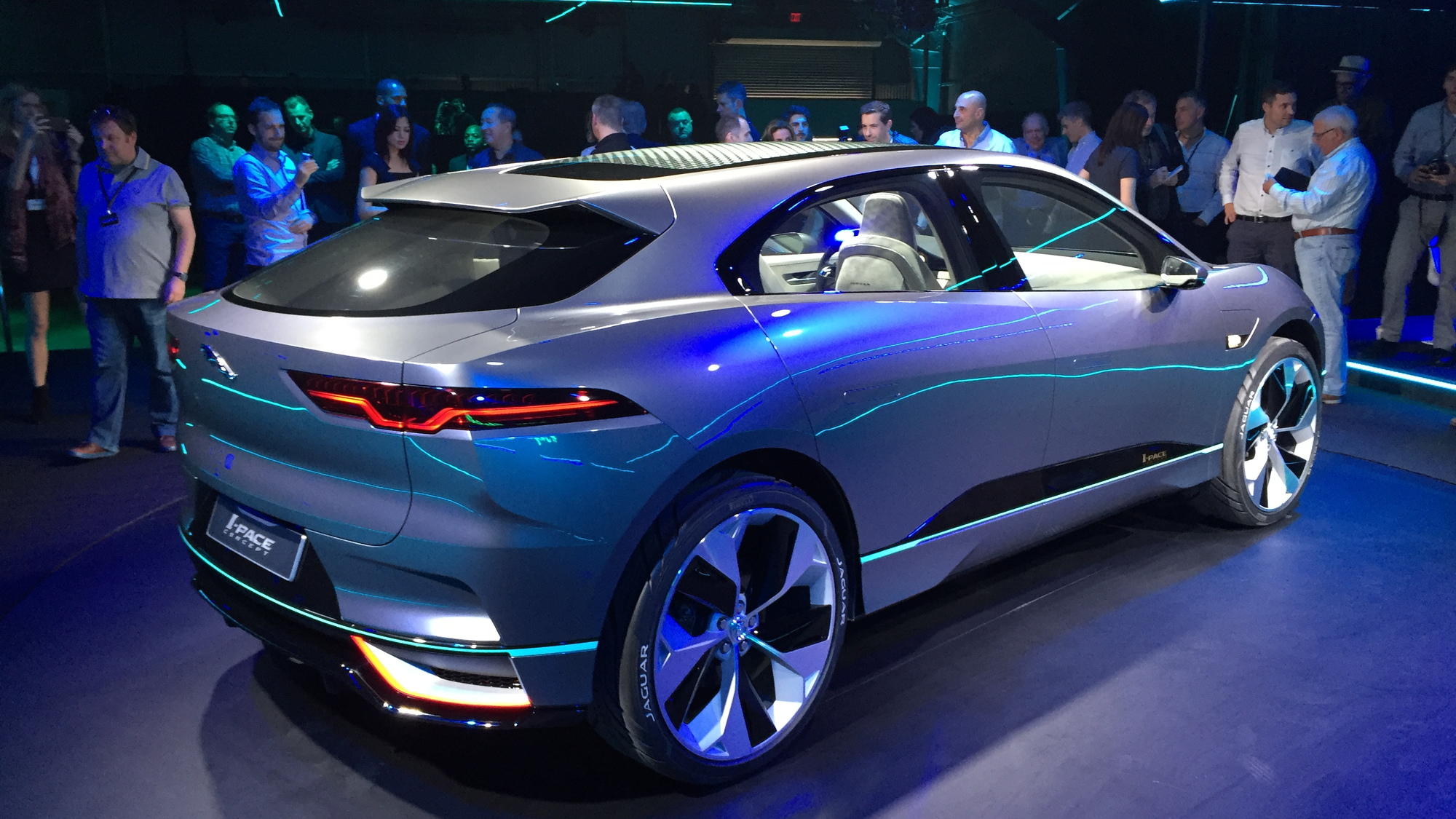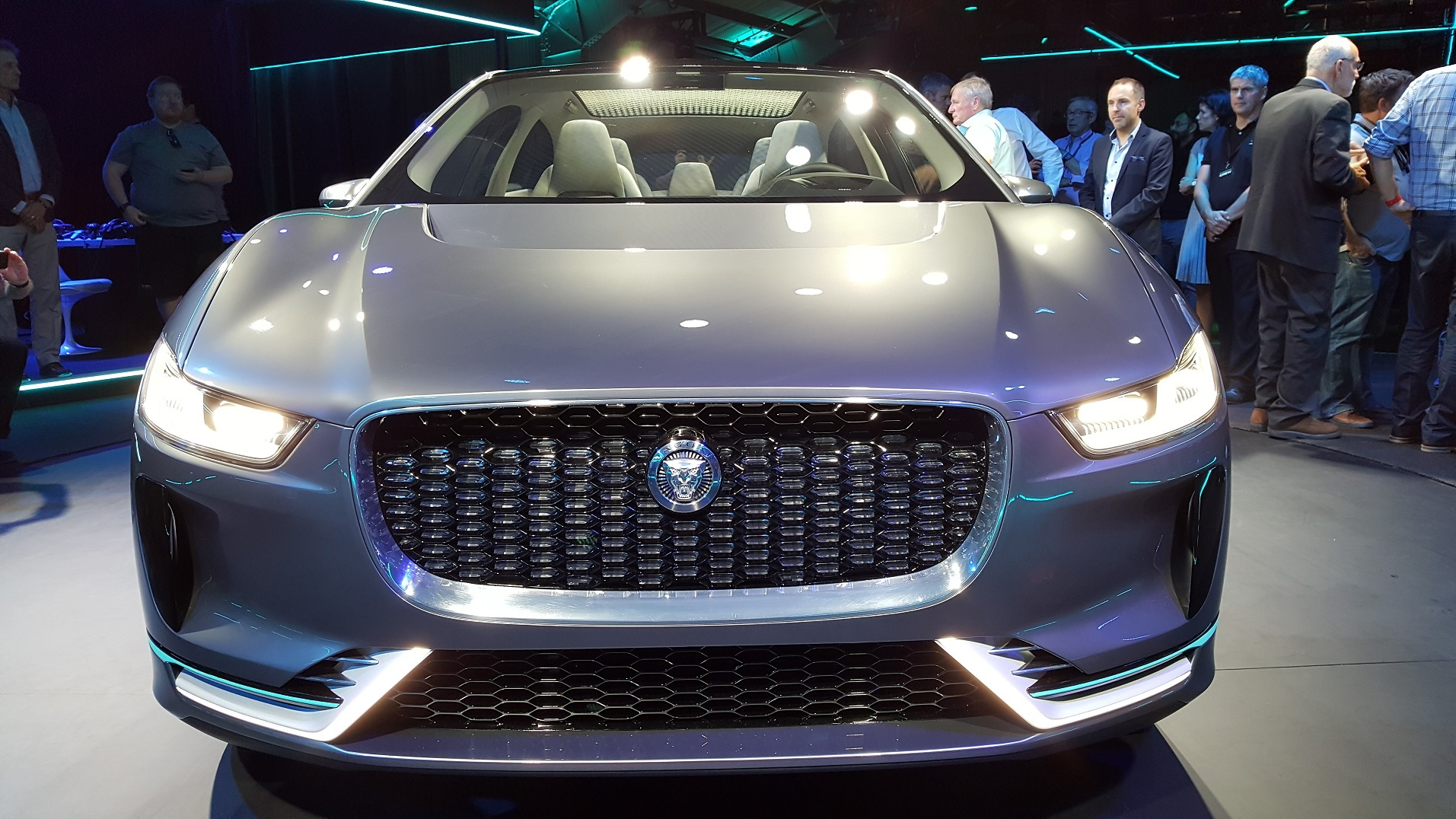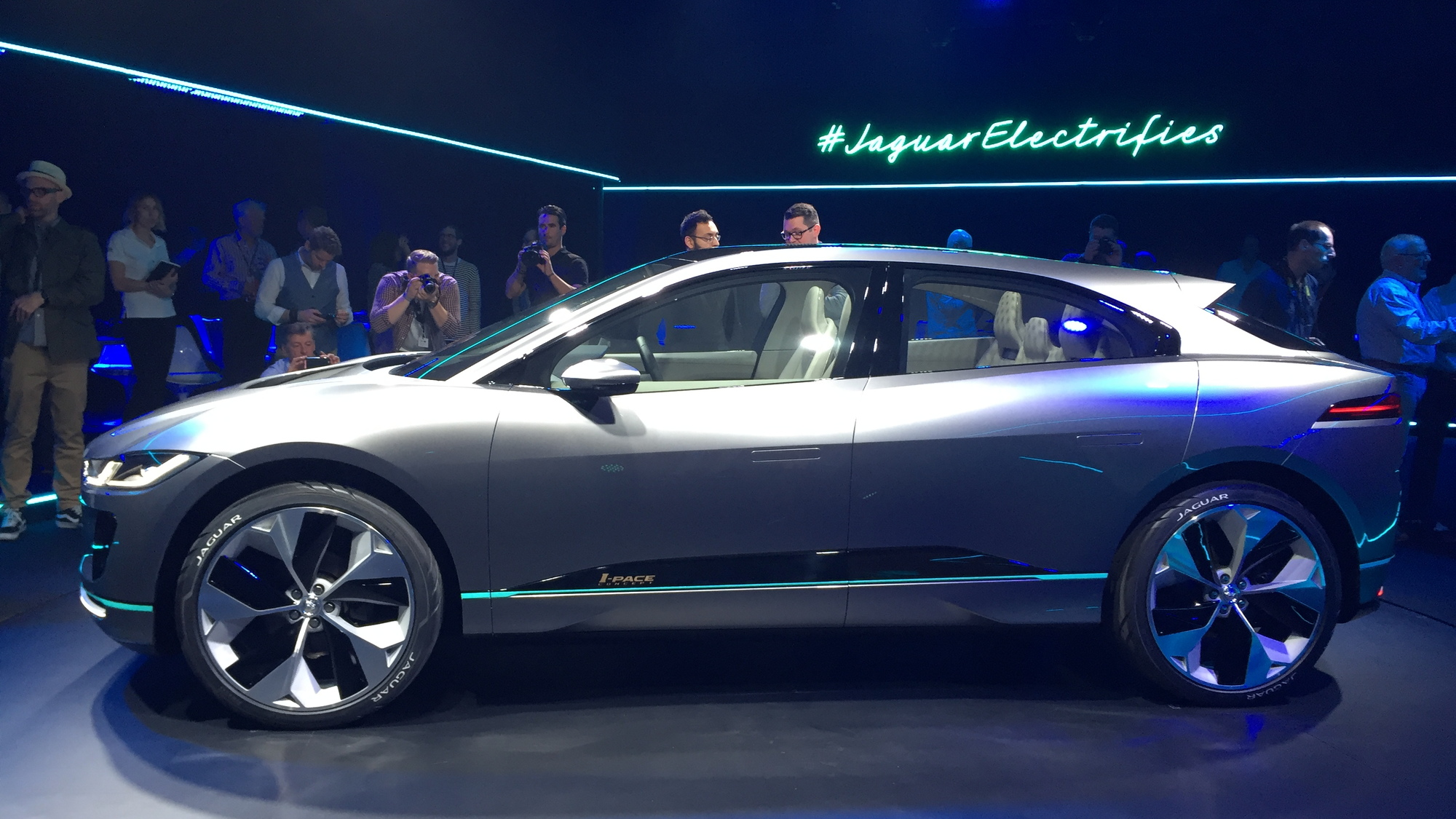Luxury electric cars: seems like everyone's doing them, doesn't it?
The latest to join the growing pool of pricey battery-electric sedans and crossover utilities is the Jaguar I-Pace, revealed tonight as a concept at a splashy event before the Los Angeles Auto Show.
But the British maker has aggressive plans to put it into production, saying its all-electric SUV will go on sale in the second half of 2018.
DON'T MISS: Jaguar to prioritize all-electric SUV, sedan over sports cars
That means it'll appear within months of the Audi e-tron, the first Tesla competitor from an established European luxury brand.
Expect the production version of Jaguar's electric I-Pace to appear a year from now, and to look relatively similar to the concept car.
A quick look at the specs reveals an estimated 220 miles of electric range on the U.S. test cycle, courtesy of a a 90-kilowatt-hour battery and a pair of 200-horsepower electric motors, one on each axle, that together provide 400 horsepower and 516 pound-feet of torque, as well as standard all-wheel drive.

Jaguar I-Pace Concept, 2016 Los Angeles Auto Show
It's the shape that makes the I-Pace stand out. While it's instantly identifiable as a Jaguar, the proportions don't attempt to mimic those of a conventional vehicle.
Instead, designer director Ian Callum took full advantage of the packaging freedom offered by an underfloor battery pack and a pair of electric motors with small dimensions.
The I-Pace has a cab-forward design that echoes, he says, the C-X75 supercar of 2010, a stunning vehicle that ultimately never made it into production.
ALSO SEE: Paris Motor Show: Jaguar C-X75 Turbine-Electric Supercar Concept! (Sep 2010)
A longer wheelbase than usual for a mid-size luxury crossover combine with a low cowl and a sharply raked tailgate, resulting in a distinctive and sporty shape quite different from the conventional SUV profile of the Audi e-tron.
The tailgate is topped with a long spoiler, to smooth airflow over the roof and direct some of it down along the rear window.
But it's at the front that the I-Pace proves subtly daring. The mesh at the top of the traditionally shaped Jaguar rectangular grille leans back, opening a wide slot to let air flow directly up and over a depressed center portion of the hood.

Jaguar I-Pace Concept, 2016 Los Angeles Auto Show
With prominent "haunch" or shoulder lines and the usual gigantic 23-inch wheels that concept cars sport, the effect is one of the racier electric-utility designs we've seen to date. Jaguar quotes a drag coefficient of just 0.29.
The liquid-cooled battery pack under the cabin uses LG Chem lithium-ion cells with a total capacity of 90 kilowatt-hours.
Each of the electric motors is rated at 150 kilowatts (200 horsepower) of peak output and 258 lb-ft of torque, producing 0-to-60-mph acceleration of around 4 seconds, Jaguar says.
CHECK OUT: Mercedes previews new electric car lineup with Generation EQ SUV concept
Unlike some Tesla versions, Jaguar has chosen to use identical motors front and rear—to reduce design effort, among other things.
While the front and rear independent suspension is adapted from that of the current F-Pace crossover utility vehicle, Jaguar calls the underpinnings of the I-Pace a "new architecture."
That suggests it may spawn additional electric vehicles following the I-Pace; executives were coy when asked that question directly.
The I-Pace will come with DC fast-charging as standard, using the CCS protocol. Jaguar quotes 90 minutes for an 80-percent recharge at 50 kw.

Jaguar I-Pace Concept, 2016 Los Angeles Auto Show
That's hardly as fast as the top Tesla Supercharger rate of 135 kw, but the small British maker is content to update its onboard charging equipment whenever the larger group of CCS users manages to set a faster standard.
One other note showing Jaguar has been listening to electric-car advocates: the I-Pace will offer different levels of regenerative braking, allowing drivers to pilot the car "mostly" with just one pedal, it says.
Jaguar has long been the weaker half of the Jaguar Land Rover conglomeration, but billions of dollars of investment over the last nine years by owner Tata are starting to pay off.
READ THIS TOO: Now, finally, the Germans are getting scared of Tesla?
The high-volume XE compact sport sedan and, even more importantly, the F-Pace crossover utility vehicle are now on the market, meaning Jaguar's U.S. sales have almost doubled this year alone.
Now the company can afford to look further into the future.
Which begs the question of how important the I-Pace electric crossover will be for Jaguar.

Jaguar I-Pace Concept, 2016 Los Angeles Auto Show
Designer Callum, who's been with the company since 1999, summed it up in stark terms.
At a press preview event this afternoon, he said bluntly that he thought the electric concept was "the most important Jaguar since the E-Type."
And, taking a lesson from Tesla, the company's website now has a button for customers interested in the I-Pace to arrive two years hence. It says simply, "I Want One."
Jaguar Land Rover provided airfare, lodging, and meals to enable High Gear Media to bring you this first-person report.
_______________________________________



















